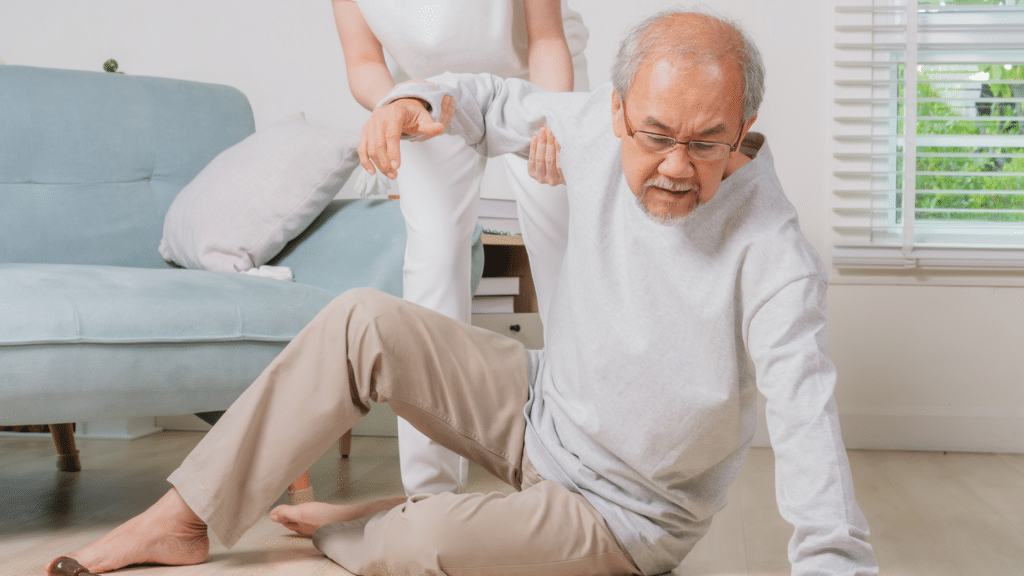Chronic pain is a complex condition that affects millions of people worldwide, impacting their daily lives and overall well-being. One often overlooked consequence of chronic pain is its potential to increase the risk of falling, leading to serious injuries and decreased quality of life. In this comprehensive guide, expert insights will be provided to help understand the link between chronic pain and the risk of falling, exploring the impact of chronic pain on balance and mobility, factors contributing to the increased risk of falling, prevention strategies, and treatment options.
The Correlation Between Chronic Pain and the Risk of Falling
Chronic pain, defined as persistent pain lasting for more than 12 weeks, can stem from various sources such as arthritis, neuropathy, or musculoskeletal disorders. The experience of chronic pain can significantly affect an individual’s physical and psychological well-being, often leading to decreased mobility, muscle weakness, and changes in gait. These factors can directly impact balance and coordination, increasing the likelihood of falls, particularly in older adults. Additionally, the fear of experiencing pain during movement can lead to avoidance of physical activities, further weakening the muscles and exacerbating the risk of falling. Understanding the correlation between chronic pain and the risk of falling is crucial in developing effective preventive measures and treatment strategies to mitigate these challenges.
Research has shown that individuals with chronic pain are at a higher risk of falling compared to those without chronic pain. The relationship between chronic pain and falls is multifaceted, involving physiological, psychological, and social factors. Chronic pain can alter sensory perception, impair proprioception, and decrease muscle strength, all of which are essential for maintaining balance and stability. Moreover, the psychological impact of chronic pain, including anxiety, depression, and fear of falling, can further compromise an individual’s confidence in their ability to move safely, leading to a self-imposed reduction in physical activity and an increased risk of falling. Understanding the intricate correlation between chronic pain and the risk of falling is essential for healthcare professionals, caregivers, and individuals living with chronic pain to implement targeted interventions and support mechanisms.
Impact of Chronic Pain on Balance and Mobility
The impact of chronic pain on balance and mobility is profound, often disrupting the intricate interplay between the musculoskeletal, sensory, and nervous systems. Chronic pain can lead to alterations in posture, muscle stiffness, and reduced range of motion, all of which contribute to compromised balance and coordination. Individuals with chronic pain may experience difficulty in weight-shifting, maintaining a steady stance, and performing coordinated movements, making them more susceptible to falls, particularly in challenging environments or during activities that require rapid changes in direction or elevation.
Beyond the physical manifestations, chronic pain can also influence an individual’s confidence in their ability to move safely, leading to a heightened fear of falling. This fear-avoidance behavior can result in decreased physical activity, muscle deconditioning, and a further decline in functional mobility, creating a cycle of reduced physical capacity and increased fall risk. Addressing the impact of chronic pain on balance and mobility requires a comprehensive approach that encompasses pain management, functional rehabilitation, and psychological support to restore confidence, improve physical function, and reduce the risk of falling.
Factors Contributing to the Increased Risk of Falling in Individuals with Chronic Pain
Several factors contribute to the increased risk of falling in individuals living with chronic pain, encompassing physical, psychological, and environmental elements. From a physical standpoint, chronic pain can lead to muscle weakness, reduced joint flexibility, and altered gait patterns, all of which directly influence an individual’s stability and risk of falling. Furthermore, the sensory disturbances associated with chronic pain, such as tingling sensations or numbness, can impair proprioception and spatial awareness, making it challenging for individuals to navigate their surroundings safely.
In addition to the physical aspects, the psychological impact of chronic pain, including anxiety, depression, and fear of falling, can exacerbate the risk of falls. Anxiety-related muscle tension and hypervigilance can affect movement coordination, while depressive symptoms may lead to decreased motivation for engaging in physical activities, further contributing to functional decline and fall risk. Moreover, the fear of experiencing pain during movement can lead to avoidance of certain activities, limiting individuals’ exposure to varied movement challenges and reducing their overall physical resilience.
Environmental factors also play a significant role in the increased risk of falling for individuals with chronic pain. Cluttered living spaces, inadequate lighting, uneven surfaces, and lack of supportive assistive devices can pose additional challenges for individuals already grappling with chronic pain, further compromising their safety and mobility. Recognizing and addressing these multifaceted factors is essential in developing tailored interventions to reduce the risk of falls and enhance the overall well-being of individuals with chronic pain.
Prevention Strategies for Reducing the Risk of Falls in Chronic Pain Patients
Implementing effective prevention strategies is paramount in reducing the risk of falls in chronic pain patients and promoting their safety and independence. A multifaceted approach that addresses the physical, psychological, and environmental components of fall risk is essential for comprehensive fall prevention. Engaging in regular physical activity and targeted exercises designed to improve strength, balance, and flexibility can significantly reduce the risk of falling. These exercises should be tailored to the individual’s specific needs and abilities, taking into account their pain levels and functional limitations.
In addition to physical interventions, addressing the psychological aspects of chronic pain and fall risk is crucial. Cognitive-behavioral strategies aimed at managing fear of falling, promoting self-efficacy, and enhancing coping skills can empower individuals to engage in daily activities with greater confidence and reduced anxiety. Furthermore, educating individuals and their caregivers about environmental modifications, such as removing tripping hazards, improving lighting, and installing supportive handrails, can create safer living environments and mitigate fall risk.
Healthcare providers play a vital role in fall prevention for chronic pain patients, conducting comprehensive assessments to identify individual risk factors, developing personalized care plans, and providing ongoing support and education. Collaborative efforts between healthcare professionals, physical therapists, occupational therapists, and mental health professionals can ensure a holistic approach to fall prevention, addressing the diverse needs of individuals living with chronic pain. By integrating these prevention strategies into clinical practice and daily routines, the risk of falls can be significantly mitigated, enhancing the overall safety and well-being of chronic pain patients.
Treatment Options for Managing Chronic Pain and Improving Balance
Managing chronic pain and improving balance requires a comprehensive treatment approach that addresses the underlying pain pathology, enhances physical function, and promotes overall well-being. Multimodal pain management strategies, including pharmacological interventions, physical therapy, and complementary therapies, can help alleviate pain symptoms and improve functional mobility. Non-pharmacological approaches such as physical therapy, exercise programs, and manual therapies play a crucial role in restoring muscle strength, flexibility, and balance, thereby reducing the risk of falls.
Additionally, integrating psychological interventions, such as cognitive-behavioral therapy, relaxation techniques, and mindfulness-based practices, can help individuals cope with the emotional impact of chronic pain, reduce fear of movement, and enhance self-management skills. By addressing the psychological aspects of chronic pain, individuals can experience improvements in mood, motivation, and overall quality of life, leading to a more proactive approach to managing their pain and reducing fall risk.
Furthermore, assistive devices and adaptive equipment can enhance mobility and safety for individuals with chronic pain, providing additional support during daily activities and reducing the likelihood of falls. Healthcare professionals can collaborate with individuals to identify the most suitable assistive devices, such as canes, walkers, or orthotic supports, to optimize mobility and reduce the impact of chronic pain on physical function.
Conclusion and Key Takeaways
Understanding the intricate link between chronic pain and the risk of falling is essential for healthcare professionals, caregivers, and individuals living with chronic pain. The impact of chronic pain on balance and mobility, coupled with the multifaceted factors contributing to increased fall risk, underscores the need for targeted interventions and support mechanisms. By implementing comprehensive prevention strategies that address the physical, psychological, and environmental aspects of fall risk, and integrating multimodal treatment approaches for managing chronic pain and improving balance, the overall safety and well-being of chronic pain patients can be significantly enhanced.
The correlation between chronic pain and the risk of falling is a complex and multifaceted issue that requires a holistic understanding and approach. By recognizing the interplay between chronic pain, balance, and fall risk, healthcare professionals can develop tailored interventions to mitigate these challenges and empower individuals to live safely and independently. Through collaborative efforts and a comprehensive continuum of care, the impact of chronic pain on fall risk can be effectively managed, leading to improved quality of life for individuals with chronic pain.

